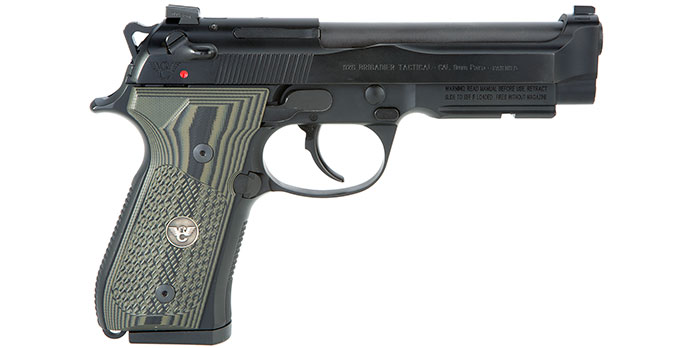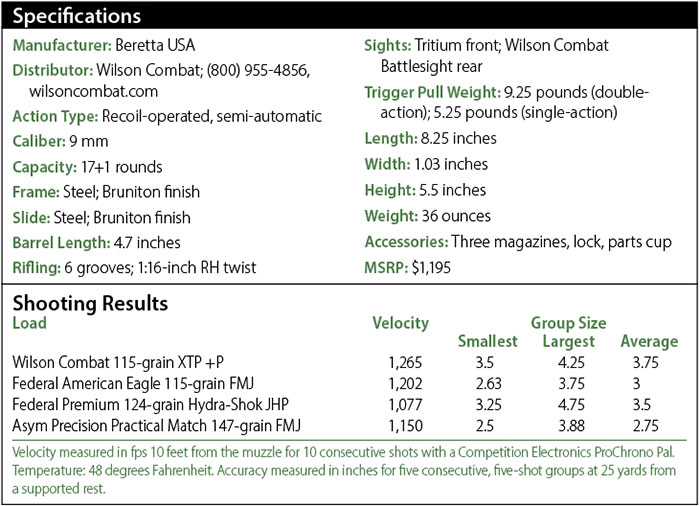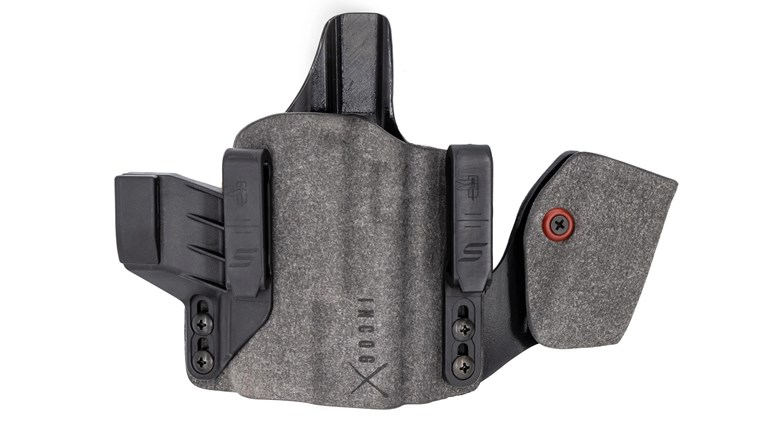
Other than John Browning and Jeff Cooper, there is no name more synonymous with the 1911 than Bill Wilson. When he took the detour from what seemed like his destiny to take over the family jewelry store, the 1911 world would be forever impacted. Wilson parlayed a shooting hobby and a single gunsmithing bench into the largest custom shop in the world. Not bad for a country boy from Arkansas.
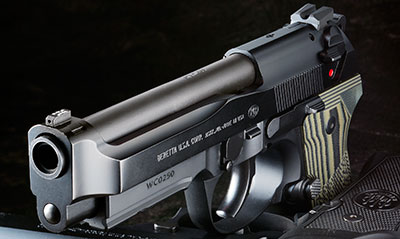
One would think the 1911 would have a special place in Wilson’s heart and you would be right, it surely does. But he has another love, one that you might not anticipate. You see, Wilson also loves the Beretta 92.
Some may argue, but there is no “rich history” of the Beretta 92, that it was ultimately an evolutionary gun. The open slide came from the Beretta Model 1922 and later, the Model 1951. The latter also offered the short-recoil, locking-breech mechanism. In fact, one could argue the 92 was the next logical progression of the Model 1951. Heck, even the basic looks of the guns are quite similar.
Still, an evolution it was. The legendary dependability of the 51 was enhanced with the 92, and the gun world quickly embraced it. One of the main reasons was the pistol’s reliability. With no traditional feed ramp and the cartridge sitting high—almost lined up with the chamber—feed problems are almost nonexistent.
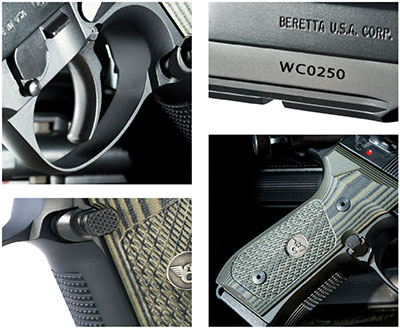
As you might expect from the man who was among the first to produce a dependable, compact 1911, a feat many thought to be impossible, you can bet reliability is first on Wilson’s list of priorities. He is known to have said, “I don’t know of another pistol on which you can count on more than the Beretta 92.” High praise, indeed.
When asked about how his love of the 92 came about, Wilson said, “Back in the 1980s, I was at the Second Chance bowling pin match talking to Jack Robbins. He was part of the team evaluating pistols for the military. Robbins was really excited about the Beretta 92 because it was kicking the competition’s butts. It was very accurate and stone-cold reliable. He also said that the felt recoil was very light. It piqued my interest and I had to have one. He sure was right.”
Apparently Beretta 92s are like that famous brand of potato chips, because Wilson couldn’t have just one. It wasn’t long before he became a 92 connoisseur and had an impressive collection. “Yeah, I’m not sure how many I have,” Wilson said. That enthusiasm led to his company, Wilson Combat, doing custom work on the pistol. “I have always been pretty good at turning my interests into business,” he said with a smile.
Of course, being a “92 guy” he was frustrated. “Over the years, Beretta made all of the features that I wanted, but they never put them all on the same gun.” In 2013, Wilson was talking to shotgun phenom Will Fennel, who at the time was on the Beretta shooting team. Fennel was happy to help, so he floated the idea of doing a Wilson Combat gun to Beretta’s Rafe Bennett. It turned out the idea was well received, because Bennett was already thinking about some new models to celebrate the 30th anniversary of the U.S. Military adopting the M9 as its primary issue sidearm. Simply put, the timing was perfect.
Wilson and the Beretta family quickly started a “mutual-admiration” club. Wilson said, with a hint of awe, “it is truly an honor to be involved with such a prestigious company.”
So, what do you get when you order a Wilson Combat Brigadier Tactical? Or, put another way, what features does Bill Wilson’s dream 92 have?
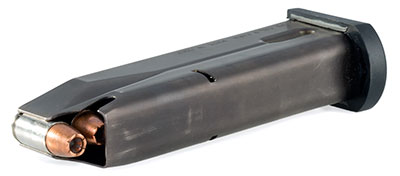
Technically, the gun is a Beretta/Wilson Combat Brigadier Tactical G. This means there is no external safety—only a decocker. Of course, it is ambidextrous, as Wilson will be the first to tell you he has not one, but two trigger fingers. The gun starts with a frame similar to that of an M9A1, which was developed for the Marine Corps in 2000. Wilson wanted the accessory rail under the dustcover. The only difference in the frame is Wilson didn’t like the square trigger guard, so a rounded one was prescribed, just like the old 92 and 92/96A1. He also liked the Elite II skeletonized hammer, which has only been available as an accessory for several years. While the M9A1 frame has nice checkering, Wilson wanted more of it and he wanted it more aggressive.
Remember, Wilson is a shooter. Rarely does a day go by when he does not pull a trigger—100 rounds is a light day for him. As one who uses his guns and uses them so often, he insists on the features that make them user friendly: “The oversize magazine release is a must on this gun. It really helps with efficient magazine changes.” The beveled magazine well is also a nice feature. The Brigadier slide is a little heavier than that of the standard 92 and while I can’t feel much difference, it does tame the recoil a bit.
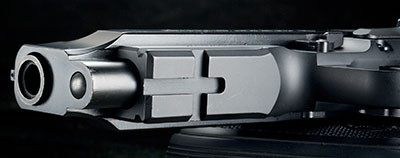
The 4.7-inch match barrel has a recessed target crown and a black-oxide coating, so the pistol maintains its classic look. Wilson also asked for a “D” trigger spring, which gives the gun a relatively light double-action trigger pull of about 9.25 pounds. Speaking of the trigger, as a 1911 guy, I didn’t expect Wilson to like the double-action trigger. After all, the first pull is long and heavy, while the following are single-action. Jeff Cooper himself described the double-action as “an elegant solution to a nonexistent problem.”
Wilson disagrees: “I started off shooting revolvers, so the trigger is like an old friend.” It is true that Wilson’s experience with revolvers taught him outstanding trigger control, and watching him shoot this Beretta is proof of that. I was also curious about how he enjoyed the thick grip, as most 1911 aficionados love a single-stack grip. “The way I grip a gun, it points great for me. Just like a 1911,” he said.
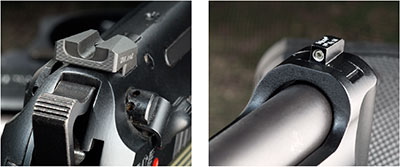
Topping the gun is a dovetail-mounted tritium front sight. It is not as large as it could be, but the rear sight is unadorned to help the shooter easily pick up the tritium dot. The rear sight is a Wilson Combat Battlesight of Wilson’s own design. It is fixed, of a simple wedge shape and has fine checkering on the rear, which eliminates glare. The sight has a deep, U-shaped notch, which my aging eyes appreciate.
As you might guess, Wilson Combat parts found their way into the pistol. The company’s proprietary fluted steel guide rod rests inside. The flutes are there to hold lubrication, which makes for smoother operation. Folks have reported the rod makes their standard 92s feel “like butta,” and I found it to have a smoother feel over the stock guide rod.
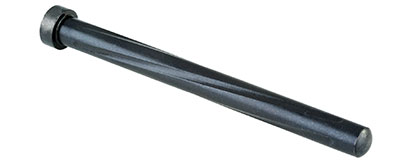
Not only are the laminated G10 epoxy grips attractive in black and green, but they also sport the Wilson Combat logo. In addition, the gun has an actual Wilson Combat serial number, starting with “WC.” Add a Wilson Combat logo on the right rear of the slide, behind the decocker, and there is no doubt this is not your standard 92.
The pistol comes with three magazines, and they, too, are not standard. They were developed as part of the M9A1 project. The magazines possess a special detail—a channel that allows debris to flow through. They are also stain resistant with a Physical Vapor Deposition (PVD) coating, an awesome process whereby the item to be coated is put into a vacuum and is either bombarded by ions, or is exposed to high heat. When a reactive gas like nitrogen is introduced, a thin, hard and most importantly, uniform coating is created. In this case the results are beautiful and tough magazines.
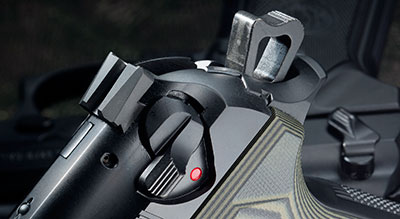
Since the 92G Brigadier Tactical deserved its best chance to shine, I let a couple of friends shoot it. One was a former member of a Marine pistol team and the other was Ben Gilman, a Master in both IDPA and USPSA. They both enjoyed the lighter trigger and the weight that the rail gave the front of the handgun. In fact, it was tough to pry it out of their hands.
We all agreed that the trigger, while an improvement over a stock 92, still needed some love—9.25 pounds is a bit heavy. The single-action pull came in at 5.25 pounds. Both pulls are fairly smooth, but there is a little hitch that fools the shooter into believing the trigger is about to break. We all adapted to it, but it is easy to see why a lot of buyers have opted for Wilson Combat to do a trigger job before guns are shipped.
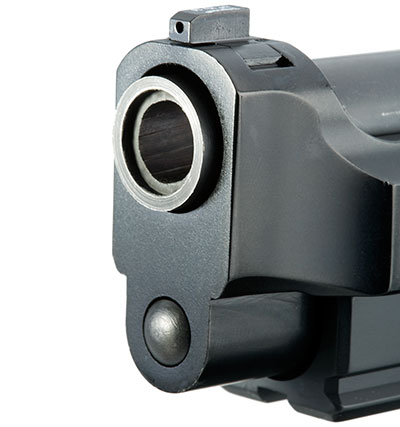
The handgun runs and runs well. Follow-up shots are easy—the pistol stays on target virtually by itself due to the heft of the steel frame. We all shot it well transitioning between targets. Despite our practical success, none of us could put together a truly solid five-shot group. Though our results were far from poor, I expected smaller clusters. It was strange: Each of us could put together nice groups of threes, but we would always have a flier or two. Was it the gun or the shooters?
Quite frankly, I think it was us. It was cold and windy, and there were problems with lighting. At the end of the session I was holding a target to shield the shooter’s eyes from the setting sun. Under different conditions, I believe the pistol is more than capable of 2-inch groups.
One thing I found irritating was the grips. There is a sharp edge that catches the web of the hand between the thumb and forefinger. It wasn’t a big thing, but I called Wilson and asked about it. He said the grips are being redesigned with more checkering and the sharp edge will be gone.
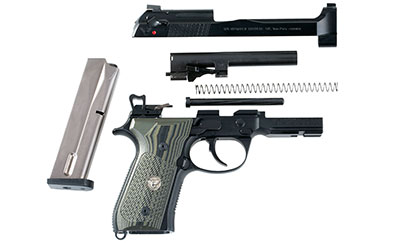
Gilman was really stoked with the 92G and asked if he could borrow it for an upcoming match. Soon after, I got a text: he had won the match. “This is the gun that Beretta should have always been making,” Gilman said. “Finally, they have a real entry into the gun games.” He also asked if he could arrange to buy it. It is nice when a homeless gun gets adopted.
The different incarnations of the Beretta 92 certainly have their place in history, and this one is no exception. The real question is where this pistol fits into the gun world at this time. Certainly, one can say that the Wilson Combat 92G Brigadier is perhaps the coolest 92 ever made for the competitive shooter. The heavier slide, dovetailed sights and rail make it ideal. More importantly, it requires little modification, which should keep it within the rules of most production classes. It is the Elite II of today. In fact, some excellent shooters are already starting to use it in IDPA. If it’s that solid a competition pistol, it certainly has a place as a personal-protection firearm, too.
After all, it is a rare event that the world’s oldest gun company produces the dream gun for the king of custom gunsmiths.
